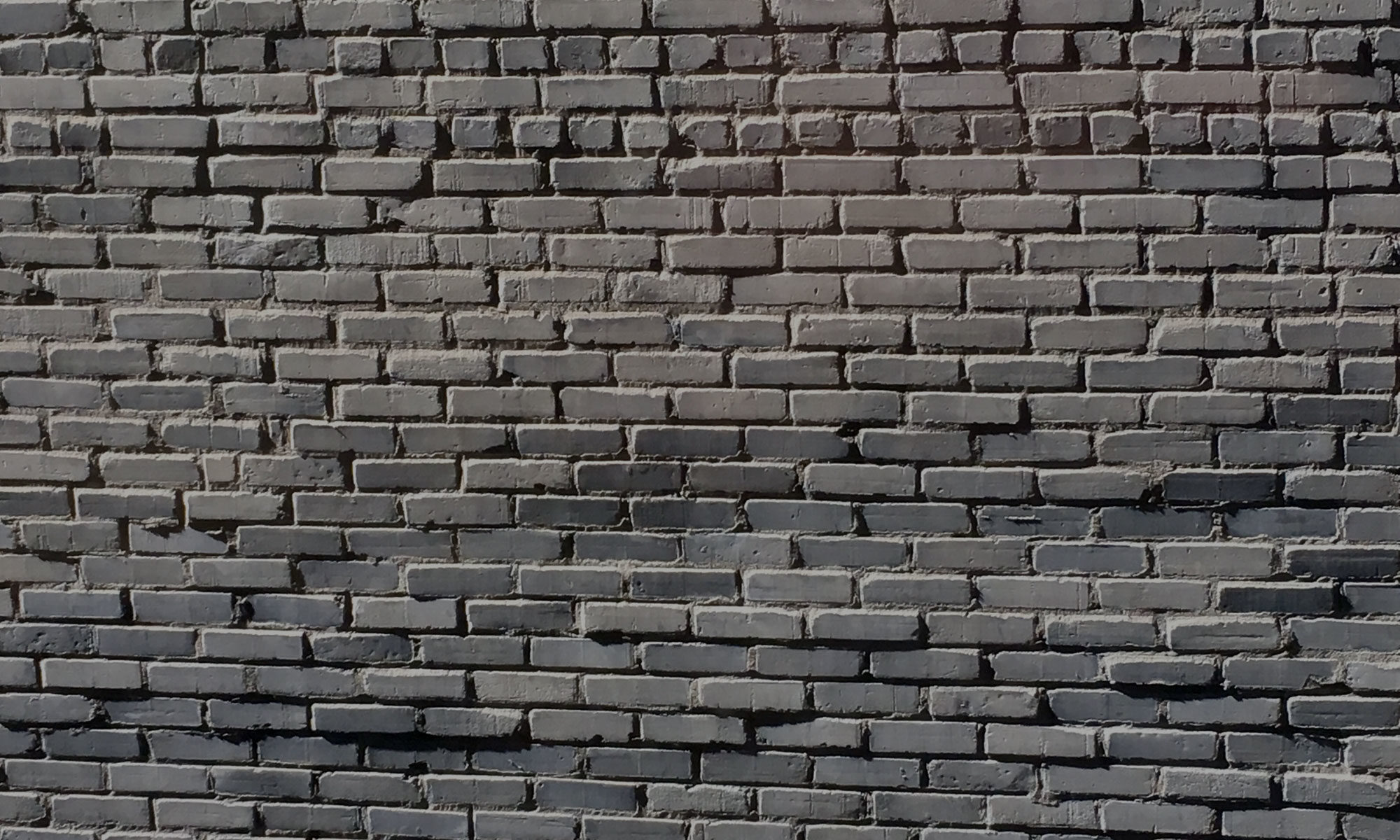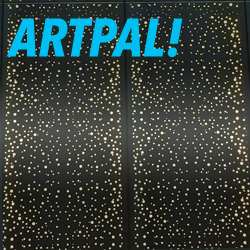Keith digs into the 1969 painting Frank by Chuck Close, MIA accession number 69.137. It’s a striking work by an important American artist who, unfortunately, has been in the news lately for troubling reasons. This means it’s time for the always-fun game of “should/can I separate the art from the artist?”
FULL EPISODE TEXT
Hi there! I’m Keith Pille, your art pal.
In this episode, we’re continuing our season one walk through a selection of objects on display at the Minneapolis institute of Art. We’ll be talking about the 1969 painting Frank by Chuck Close; its MIA accession number is 69.137, if that helps you find it or a picture of it.
Let’s start with a description. Frank is a black and white photorealist portrait of a man who has a very distinct, groovy late-60s hipster look going. He has curly hair, really cool, clunky glasses, and a chinstrap beard that shouldn’t work but somehow does. His head and shoulders appear in front of a plain white background. And the painting’s photorealism is astonishing- it really does look like a gigantic, nine-foot-tall black and white photograph, especially from across a gallery. The painting winds up being striking because of the interplay of these three elements- the photorealist technique, the enormous size, and the distinctness of the subject’s look.
From where I sit, this painting has always been one of the works most closely associated with the MIA. It’s often been installed in places where you couldn’t help but be confronted by its immensity as you walked into the museum. I know that was my experience the first time I visited… our eyes are drawn to faces, and it’s hard not to be sucked in by this enormous face. And I know this isn’t just me. For decades, if I’ve mentioned the MIA to people, they’ve asked me “oh yeah, do they still have that giant awesome black and white portrait up?”
Chuck Close is a major figure of American art. He first made his name in the 1960s and 70s doing very large photorealist portraits (and I should note here that the Walker Art Center, which is the other major art museum in the Twin Cities, has a Close self-portrait which predates Frank by about a year and is generally considered to be more important in Close’s artistic development. But I’ve always preferred Frank for my own inscrutable reasons, so that’s what we’re talking about.)
Anyway. When Close got rolling with his big photorealist portraits, painted portraiture was in steep decline after being displaced by photography, a process that had actually started in the late 19th century and just snowballed through the twentieth. It never completely went away, but it had definitely lost cultural presence. Close was pushing back against that, showing that there was room for artistic interpretation to coexist with photorealism; he was also dealing with his own psychological reality of experiencing a psychological condition called face blindness.
When painting Frank, as with his other portraits, Close worked from a photograph, transferring the image to canvas by following a tight grid. After severe medical issues in late 1988 left him with drastically reduced motor control, he changed his style to a more impressionistic approach that is still grid-based. If you do an image search for his official portrait of Bill Clinton, you can see a good example of Close’s later technique. It’s worth mentioning, I think, that when some relatives of mine who are neither art lovers or even remotely fans of Bill Clinton went to the National Gallery, they came back raving about the really cool painting of Bill Clinton that they saw. So Close’s portraits connect, in either style.
OK, but there’s another thing we need to talk about with Chuck Close. In December of 2017, several women came forward to say that Close had sexually harassed them when they came to his studio to pose for portraits. He pressured them to pose nude when that hadn’t originally been the deal, and in at least one case when a woman disrobed and posed, Close invaded her personal space and made some extremely inappropriate comments.
Close apologized, kind of, but it was one of those “I’m sorry if anyone was offended” nonapology apologies, falling back on statements like “I’ve never had a complaint in 50 years, not one” and “last time I looked, discomfort was not a major offense. I never reduced anyone to tears, no one ever ran out of the place. If I embarrassed anyone or made them feel uncomfortable, I am truly sorry, I didn’t mean to. I acknowledge having a dirty mouth, but we’re all adults.” He eventually started calling the accusations lies and said that he was quote “being crucified.”
The women told the New York Times that they felt like they’d been exploited, and that Close had violated the code of conduct that exists between ethical artists and models who pose nude for them. The existence of this code, of course, is in response to centuries of bad behavior on the part of artists. The moment in which these women felt like they could come forward existed because the Me Too movement, in response to decades of bad behavior on the part of, well, American society, was allowing women’s voices to be heard. These women felt like Close was abusing his power as top-shelf American artist; that’s the pattern that repeats itself over and over, men on the upper end of a power dynamic abusing that dynamic for their own gratification.
In January of 2018, the Times ran a story about how museums deal with Close, whether they acknowledge this behavior. The National Gallery did cancel a planned Close show, but curators from other major museums that the Times talked to skewed heavily against acknowledging it; examples of Pablo Picasso and Egon Schiele were brought up in their general thrust of “hey, the canon is full of bad apples”
So that’s the thing- with a lot of artists, and I don’t just mean visual artists, you end up having to decide where your lines are and how far you’re willing to go to separate the art from the artist. And I don’t pretend to have an easy answer for this. It’s a personal decision, probably on a case by case basis, and it ends up being between you and your conscience.
The fact that we’re hearing more and more women’s stories now, and that we as a culture have finally started believing them, means that we’re all doing more and more of these evaluations.
I know that just in the course of writing this, I struggled back and forth between whether I should just not talk about Close at all, because of his behavior, or if it was better to go out of my way to talk about him, so that I could foreground his behavior and the issues it raises. I chose the latter, obviously, because I do think it’s important to talk this instead of just letting it sit. But I’m not 100% sure it was the right choice. I know I’m not really on fire to go check out more Chuck Close paintings any time soon.
In the specific case of unavoidable artists who behaved badly towards women, we can maybe offset some of the badness by paying more attention to art made by women. So if you want an artist of Close’s generation who also did important work with portraiture, I suggest digging into the work of Cindy Sherman. You should definitely dig into the work of Cindy Sherman. Cindy Sherman rules.
Those curators that the Times talked to are right that the canon’s full of bad apples. But it’s an abdication to look at that fact and just shrug and say hey, what’re you gonna do? On the other hand, while I can understand the ethical appeal of a personal zero-tolerance policy, the sad truth is that I think that’s emotionally unworkable in the world we live in. There are just too many core parts of our culture that are tainted in one way or another.
And if you look at the history of art, it’s unfortunate but true that a lot of the people who changed the culture in major ways are people who did things that probably should have earned them obscurity; but you can’t get a clear picture of the past without acknowledging their work. So in the end, you end up having to figure out what you can live with, how far you’re ok with telling yourself, “well, the guy seems to be a piece of crap, but his painting’s important.” That’s uncomfortable and unsatisfying. But living in the world with your eyes open can be uncomfortable and unsatisfying. The irony is that art usually helps with this. But not always.
Thank you for listening to Art Pal. Again, I’m Keith Pille. You can find me on Twitter at @keithpille. If you liked the show, please spread the word or pop out to itunes and leave a review. And of course, go on and check out the rest of the season, there’s a lot more art to talk about.

